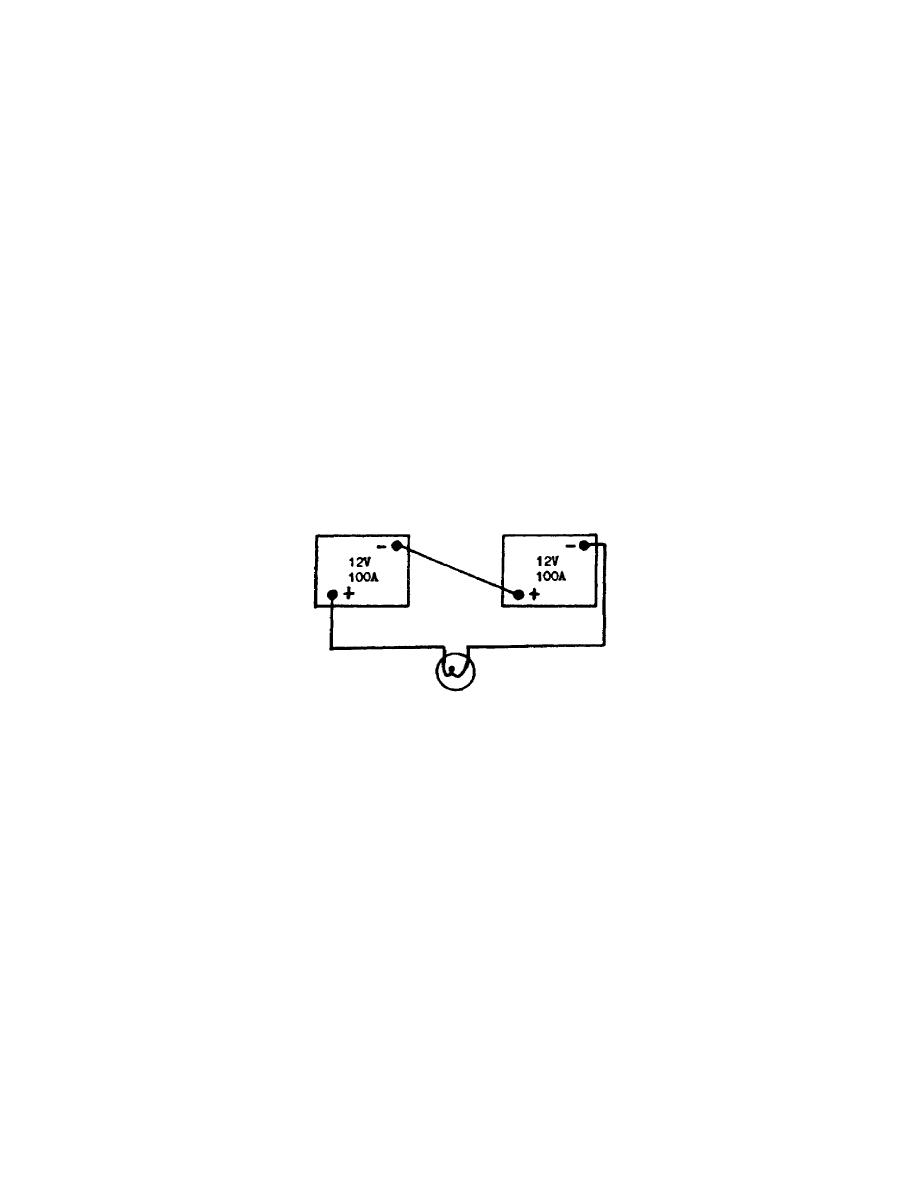
c. Through use and age the capacity of a battery decreases. This is due to
some of the active material dropping off the plates and the buildup of a hard
coating of sulphate on the plates. Because of this, testing the gravity of the
battery with a hydrometer may not always reveal the true conditions of the battery.
The electrolyte may be strong enough, but the battery capacity may be reduced to a
point where the available current supply is too small. This condition can be
detected by making a high-rate discharge test of the battery.
(1) Do not perform a high-rate discharge test when the specific gravity
of the electrolyte is 1.225 or less, or if the variation of specific gravity
between cells is more than 25 points. After charging, the battery should be
allowed to set for several hours before making a high-rate discharge test.
(2) High-rate discharge testers are available for testing batteries, but
the test instruments vary a great deal. Always perform a high-rate discharge test
according to instructions that are with the test instrument. In use, the test
instrument draws a high current from the battery and the battery voltage is read on
a voltmeter during the discharge. The correct amount of voltage will vary
depending on the test instrument used.
d. In order to increase voltage, the batteries are connected in series.
Recall that in a series circuit the current has only one path to follow; therefore,
the same current will flow through all batteries when they are connected in series.
A series connection of two batteries is made by connecting the negative terminal
post of one battery to the positive terminal post of another battery. Batteries
connected in series should have the same ampere-hour rating. A voltage source
equal to the sum of both batteries is then available at the two remaining terminal
posts. The ampere-hour rating of batteries connected in series is the same as the
smallest battery by itself (fig 23).
Figure 23.
24-volt, 100-ampere-hour supply.
e. In order to increase the ampere-hour rating, the batteries are connected
in parallel. In a parallel circuit the current has more than one path to follow.
Batteries connected in parallel must have the same voltage rating. To connect two
batteries in this manner, the positive terminal posts of both batteries are
connected together and then the negative terminals of the batteries are connected.
Each battery will now furnish half the current flowing in the load so their ampere-
hour ratings will be added together, but the voltage will be the same as one
battery alone (fig 24).
OS 010, 3-P28




 Previous Page
Previous Page
